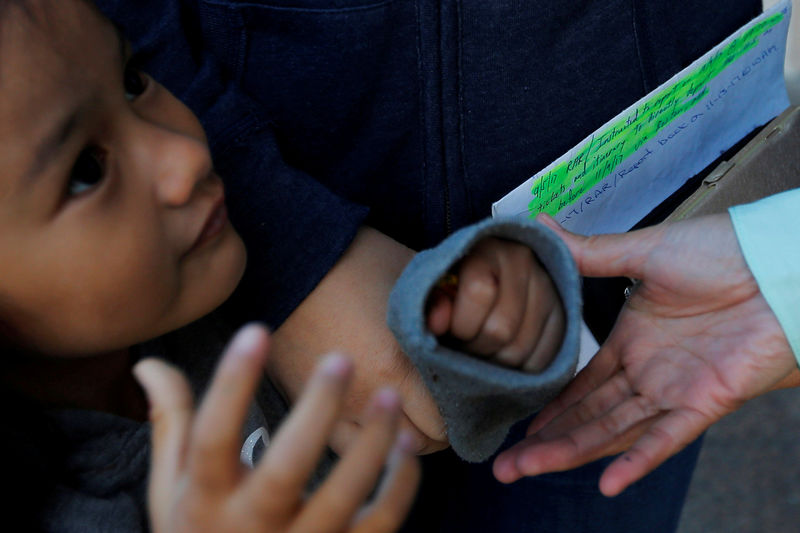Development of gender identity
Gender Identity Development in Children
By: Jason Rafferty MD, MPH, EdM, FAAP
There are many ways parents can promote healthy gender development in children. It helps to understand gender identity and how it forms.
What's the difference between gender and sex?
Being a boy or a girl, for most children, is something that feels very natural. At birth, babies are assigned male or female based on physical characteristics. This refers to the "sex" or "assigned gender" of the child. Meanwhile, "gender identity" refers to an internal sense people have of who they are that comes from an interaction of biological traits, developmental influences, and environmental conditions. This may be male, female, somewhere in between, a combination of both or neither.
Self-recognition of gender identity develops over time, much the same way a child's physical body does. Most children's asserted gender identity aligns with their assigned gender (sex). However, for some children, the match between their assigned gender and gender identity is not so clear.
How does gender identity develop in children?
Gender identity typically develops in stages:
Around age two: Children become conscious of the physical differences between boys and girls.
Before their third birthday: Most children can easily label themselves as either a boy or a girl.
By age four: Most children have a stable sense of their gender identity.
During this same time of life, children learn gender role behavior—that is, doing "things that boys do" or "things that girls do." However, cross-gender preferences and play are a normal part of gender development and exploration regardless of their future gender identity. See The Power of Play - How Fun and Games Help Children Thrive.
The point is that all children tend to develop a clearer view of themselves and their gender over time. At any point, research suggests that children who assert a gender-diverse identity know their gender as clearly and consistently as their developmentally matched peers and benefit from the same level of support, love and social acceptance.
What parents can do:
All children need the opportunity to explore different gender roles and different styles of play. Parents can make sure their young child's environment reflects diversity in gender roles and encourages opportunities for everyone. Some ideas would be to offer:
Children's books or puzzles showing men and women in non-stereotypical and diverse gender roles (stay-at-home dads, working moms, male nurses and female police officers, for example).
A wide range of toys for your child to choose from, including baby dolls, toy vehicles, action figures, blocks, etc.
By age 6, most children spend most of their playtime with members of their own sex and may gravitate towards sports and other activities that are associated with their gender.
 It is important to allow children to make choices regarding friend groups, sports and other activities they get involved in. It is also a good idea to check in with your child to learn about their preferences and to make sure they feel included without teasing or bullying.
It is important to allow children to make choices regarding friend groups, sports and other activities they get involved in. It is also a good idea to check in with your child to learn about their preferences and to make sure they feel included without teasing or bullying.
How do children typically express their gender identity?
In addition to their choices of toys, games, and sports, children typically express their gender identity in the following ways:
Clothing or hairstyle
Preferred name or nickname
Social behavior that reflects varying degrees of aggression, dominance, dependency and gentleness.
Manner and style of behavior and physical gestures and other nonverbal actions identified as masculine or feminine.
Social relationships, including the gender of friends, and the people they decide to imitate.
While a child's gender-specific behavior (i.e. gender expression) at any time seems to be influenced by exposure to stereotypes and their identification with the people in their lives, the internal sense of being a girl, boy, in between or something else (i.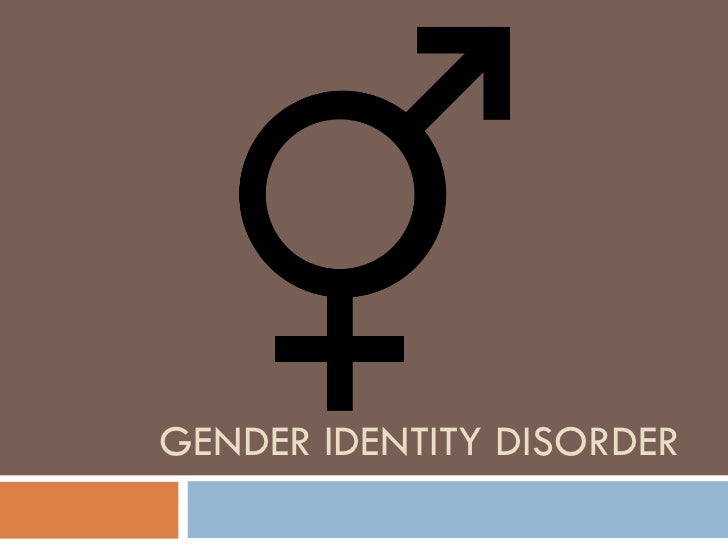 e. gender identity) cannot be changed.
e. gender identity) cannot be changed.
How have gender stereotypes changed over time?
Our expectations of "what girls do" and "what boys do" have changed. Many female athletes excel at their sports. Girls increasingly pursue subjects traditionally thought of as "masculine." There are many famous male chefs, artists, and musicians―fields traditionally thought of as "feminine." Over time, society has recognized that stereotypes of "masculine" and "feminine" activities and behaviors are inaccurate and limiting to a child's development. Such interests also do not determine or influence one's gender identity. Furthermore, our ability to predict who a child is based on early preferences is not very accurate and may be harmful if it leads to shame or attempts at suppressing their skills, talents and genuine self.
Still, when a child's interests and abilities are different from what society expects, they may be subjected to discrimination and bullying.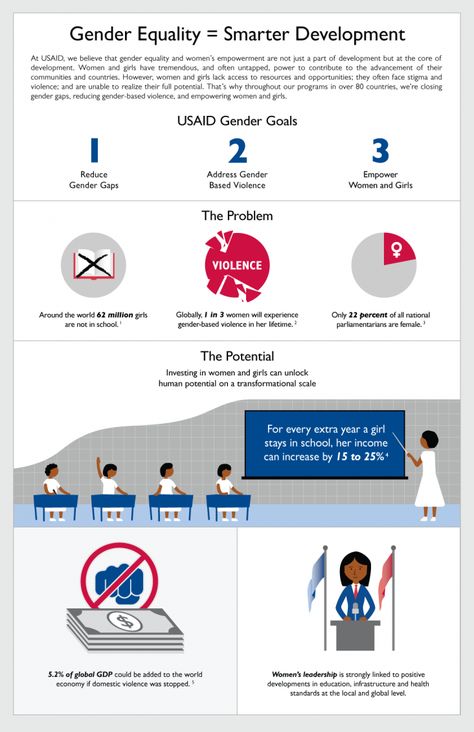 It is natural for parents to have gender-based expectations for their children and to want to protect them from criticism and exclusion. Instead of pushing children to conform to these pressures and to limit themselves, parents can play an important role in advocating for safe spaces where their children can feel comfortable and good about themselves.
It is natural for parents to have gender-based expectations for their children and to want to protect them from criticism and exclusion. Instead of pushing children to conform to these pressures and to limit themselves, parents can play an important role in advocating for safe spaces where their children can feel comfortable and good about themselves.
If your child doesn't excel in sports or even have an interest in them, for example, there will still be many other opportunities and areas in which they can thrive. Regardless of gender identity, each child has their own strengths that may not always conform to society's or your own expectations, but they will still be a source of current and future success.
Remember
Gender development is a normal process for all children. Some children will exhibit variations―similar to all areas of human health and behavior. However, all children need support, love and care from family, school and society, which fosters growth into happy and healthy adults.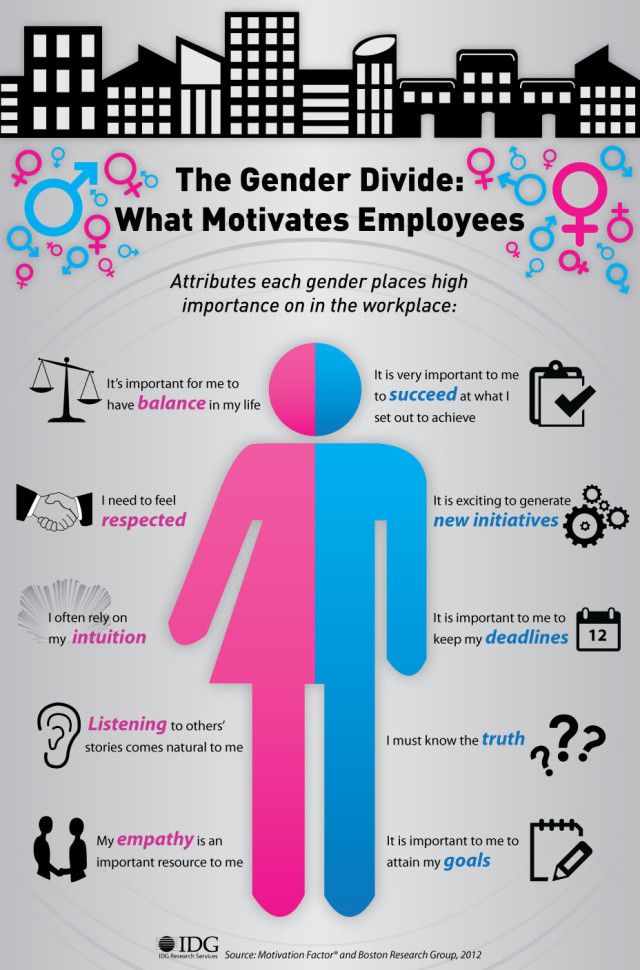
Additional Information & Resources:
Gender-Diverse & Transgender Children
Parenting a Gender-Diverse Child: Hard Questions Answered
Sex, Gender Identity & Puberty
How You Can Help Your Child Avoid & Address Bullying
Ensuring Comprehensive Care and Support for Transgender and Gender-Diverse Children and Adolescents (AAP Policy Statement)
About Dr. Rafferty
Jason Rafferty, MD, MPH, EdM, FAAP, is a "Triple Board" residency graduate who is pediatrician and child psychiatrist at Thundermist Health Centers, a Patient-Centered Medical Home in Rhode Island. He specializes in adolescent substance use disorders and gender and sexual development, and also practices in related specialty clinics at Hasbro Children's Hospital and Emma Pendleton Bradley Hospital. Dr. Rafferty is an advocate in his local community and on a national level through work with the American Academy of Pediatrics on issues including the emotional health of young men, access to care for LGBTQ youth, and prevention of childhood homelessness.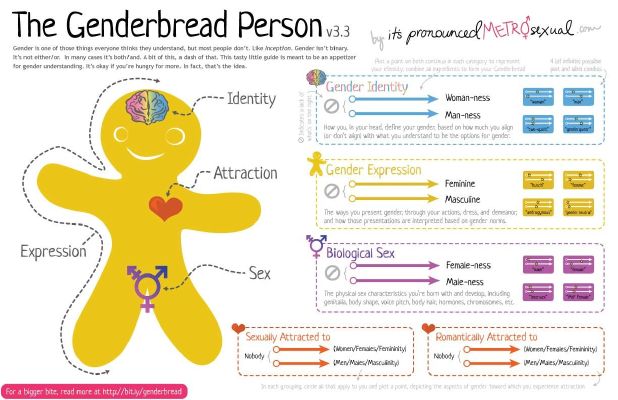
The information contained on this Web site should not be used as a substitute for the medical care and advice of your pediatrician. There may be variations in treatment that your pediatrician may recommend based on individual facts and circumstances.
15.4 Development of Gender Identity
From birth, children are assigned a gender and are socialized to conform to certain gender roles based on their biological sex. “Sex,” refers to physical or physiological differences between males, females, and intersex persons, including both their primary and secondary sex characteristics. “Gender,” on the other hand, refers to social or cultural distinctions associated with a given sex.
When babies are born, they are assigned a gender based on their biological sex—male babies are assigned as boys, female babies are assigned as girls, and intersex babies are born with sex characteristics that do not fit the typical definitions for male or female bodies, and are usually relegated into one gender category or another.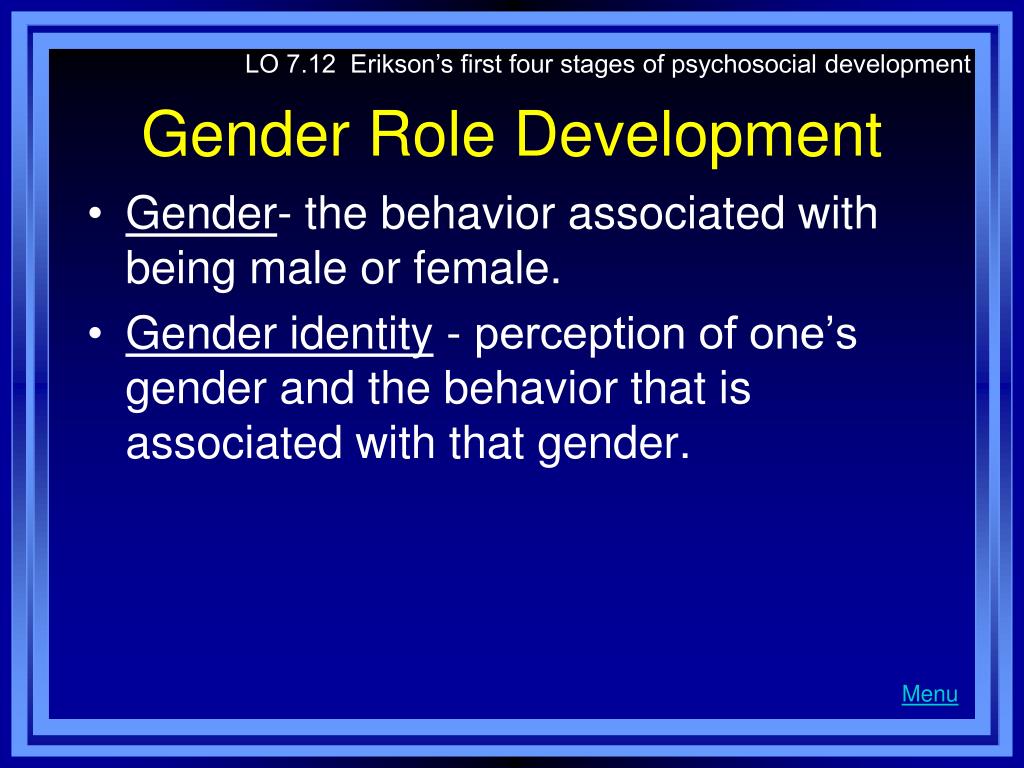 Scholars generally regard gender as a social construct, meaning that it doesn’t exist naturally but is instead a concept that is created by cultural and societal norms. From birth, children are socialized to conform to certain gender roles based on their biological sex and the gender to which they are assigned.655
Scholars generally regard gender as a social construct, meaning that it doesn’t exist naturally but is instead a concept that is created by cultural and societal norms. From birth, children are socialized to conform to certain gender roles based on their biological sex and the gender to which they are assigned.655
A person’s subjective experience of their own gender and how it develops, or gender identity, is a topic of much debate. It is the extent to which one identifies with a particular gender; it is a person’s individual sense and subjective experience of being a man, a woman, or other gender. It is often shaped early in life and consists primarily of the acceptance (or non-acceptance) of one’s membership into a gender category. In most societies, there is a basic division between gender attributes assigned to males and females. In all societies, however, some individuals do not identify with some (or all) of the aspects of gender that are assigned to their biological sex.
Those that identify with the gender that corresponds to the sex assigned to them at birth (for example, they are assigned female at birth and continue to identify as a girl, and later a woman) are called cisgender. In many Western cultures, individuals who identify with a gender that is different from their biological sex (for example, they are assigned female at birth but feel inwardly that they are a boy or a gender other than a girl) are called transgender. Some transgender individuals, if they have access to resources and medical care, choose to alter their bodies through medical interventions such as surgery and hormonal therapy so that their physical being is better aligned with their gender identity.
Figure 15.11: This person identifies as genderqueer.656
Recent terms such as “genderqueer,” “genderfluid,” “gender variant,” “androgynous,” “agender,” and “gender nonconforming” are used by individuals who do not identify within the gender binary as either a man or a woman. Instead they identify as existing somewhere along a spectrum or continuum of genders, or outside of the spectrum altogether, often in a way that is continuously evolving.
Instead they identify as existing somewhere along a spectrum or continuum of genders, or outside of the spectrum altogether, often in a way that is continuously evolving.
15.4.1 The Gender Continuum
Viewing gender as a continuum allows us to perceive the rich diversity of genders, from trans- and cisgender to gender queer and agender. Most Western societies operate on the idea that gender is a binary, that there are essentially only two genders (men and women) based on two sexes (male and female), and that everyone must fit one or the other. This social dichotomy enforces conformance to the ideals of masculinity and femininity in all aspects of gender and sex—gender identity, gender expression, and biological sex.
According to supporters of queer theory, gender identity is not a rigid or static identity but can continue to evolve and change over time. Queer theory developed in response to the perceived limitations of the way in which identities are thought to become consolidated or stabilized (for instance, gay or straight), and theorists constructed queerness in an attempt to resist this.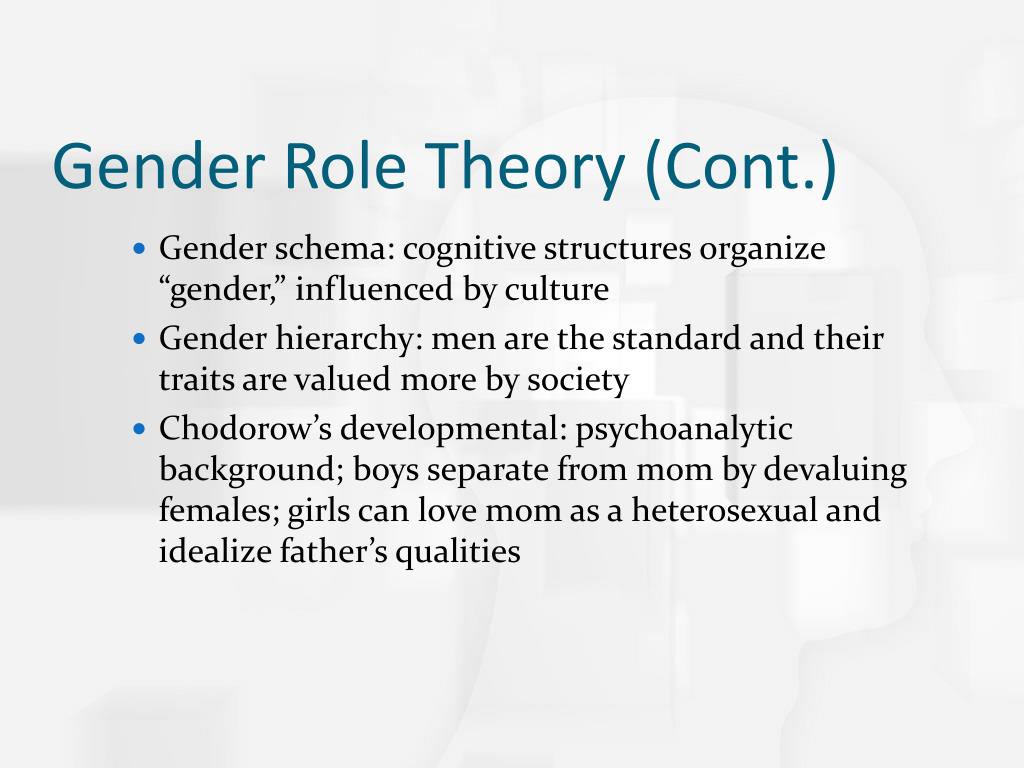 In this way, the theory attempts to maintain a critique rather than define a specific identity. While “queer” defies a simple definition, the term is often used to convey an identity that is not rigidly developed but is instead fluid and changing.657
In this way, the theory attempts to maintain a critique rather than define a specific identity. While “queer” defies a simple definition, the term is often used to convey an identity that is not rigidly developed but is instead fluid and changing.657
15.4.1.1 The Genderbread Person
In 2012, Sam Killerman created the Genderbread Person as an infographic to break down gender identity, gender expression, biological sex, and sexual orientation.658 In 2018, he updated it to version 2.0 to be more accurate, and inclusive.659
Figure 15.12: The Genderbread Person explains gender identity, gender expression, biological sex, and sexual orientation.660
15.4.1.1.1 Gender Pronouns
661Pronouns are a part of language used to refer to someone or something without using proper nouns. In standard English, some singular third-person pronouns are “he” and “she,” which are usually seen as gender-specific pronouns, referring to a man and a woman, respectively.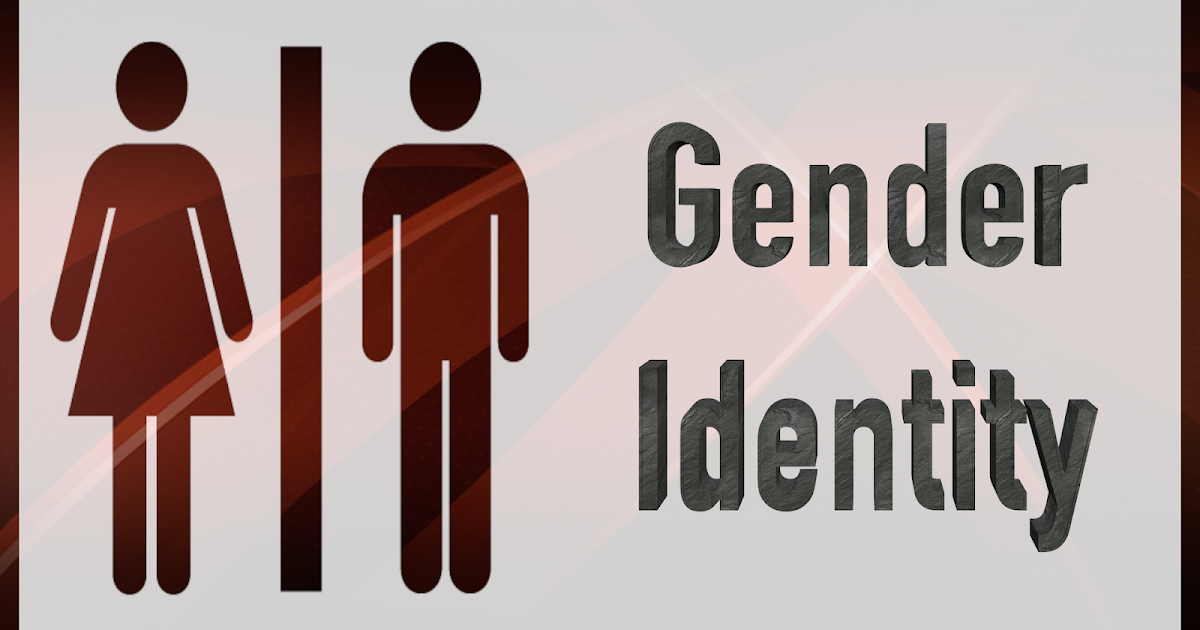 A gender-neutral pronoun or gender-inclusive pronoun is one that gives no implications about gender, and could be used for someone of any gender.
A gender-neutral pronoun or gender-inclusive pronoun is one that gives no implications about gender, and could be used for someone of any gender.
Some languages only have gender-neutral pronouns, whereas other languages have difficulty establishing any that aren’t gender-specific. People with non-binary gender identities often choose new third-person pronouns for themselves as part of their transition. They often choose gender-neutral pronouns so that others won’t see them as female or male.
Here is a table based on the Rainbow Coalition of Yellowknife’s Handy Guide to Pronouns:
| Pronouns | Example |
|---|---|
| He/His/Him (masculine pronouns) | He is going to the store to buy himself a hat. I saw him lose his old hat yesterday. |
| She/Her/Her (feminine pronouns) | She is going to the store to buy herself a hat. I saw her lose her old hat yesterday. I saw her lose her old hat yesterday. |
| They/Them/Their (gender neutral pronouns) | They are going to the store to buy themselves a hat. I saw them lose their old hat yesterday. |
15.4.2 Factors that Influence Gender Identity
Although the formation of gender identity is not completely understood, many factors have been suggested as influencing its development. Biological factors that may influence gender identity include pre- and post-natal hormone levels and genetic makeup. Social factors include ideas regarding gender roles conveyed by family, authority figures, mass media, and other influential people in a child’s life. According to social-learning theory, children develop their gender identity through observing and imitating the gender-linked behaviors of others; they are then “rewarded” for imitating the behaviors of people of the same gender and “punished” for imitating the behaviors of another gender.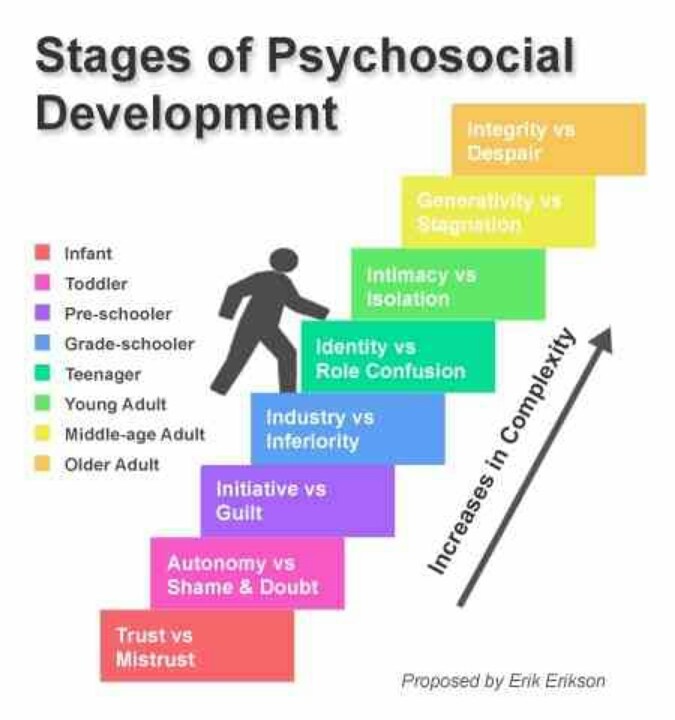 For example, male children will often be rewarded for imitating their father’s love of baseball but punished or redirected in some way if they imitate their older sister’s love of dolls. Children are shaped and molded by the people surrounding them, who they try to imitate and follow.
For example, male children will often be rewarded for imitating their father’s love of baseball but punished or redirected in some way if they imitate their older sister’s love of dolls. Children are shaped and molded by the people surrounding them, who they try to imitate and follow.
15.4.2.1 Gender Roles
The term “gender role” refers to society’s concept of how men and women are expected to act. As we grow, we learn how to behave from those around us. In this socialization process, children are introduced to certain roles that are typically linked to their biological sex. The term “gender role” refers to society’s concept of how men and women are expected to act and behave. Gender roles are based on norms, or standards, created by society. In American culture, masculine roles have traditionally been associated with strength, aggression, and dominance, while feminine roles have traditionally been associated with passivity, nurturing, and subordination.
15.4.2.3 Gender Stereotypes, Sexism, and Gender-Role Enforcement
The attitudes and expectations surrounding gender roles are not typically based on any inherent or natural gender differences, but on gender stereotypes, or oversimplified notions about the attitudes, traits, and behavior patterns of males and females.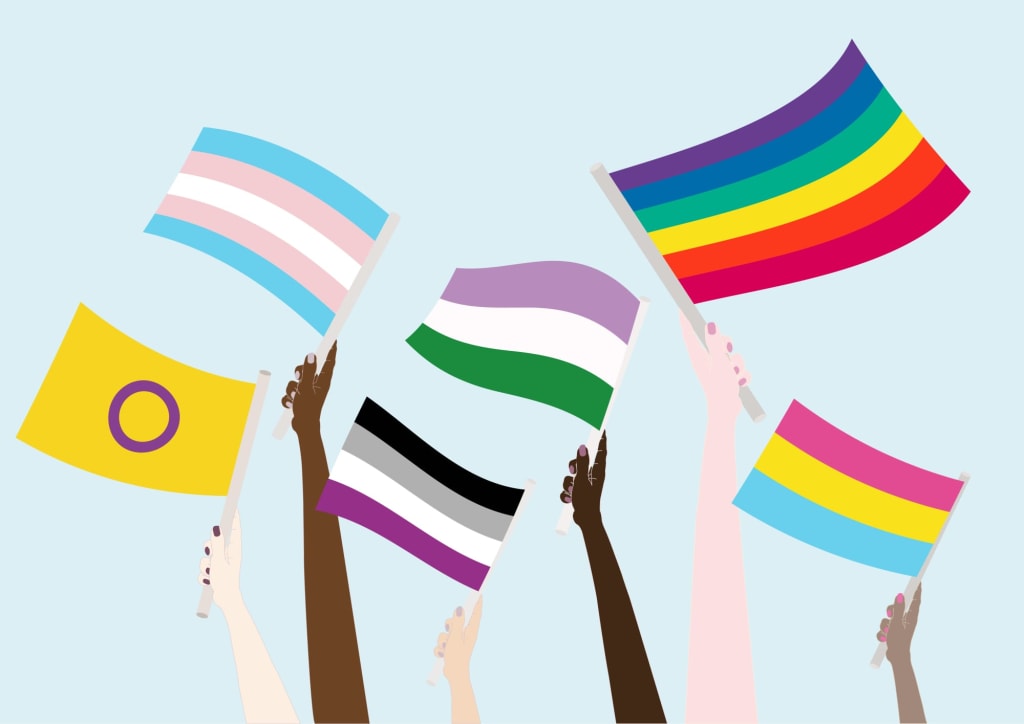 We engage in gender stereotyping when we do things like making the assumption that a teenage babysitter is female.
We engage in gender stereotyping when we do things like making the assumption that a teenage babysitter is female.
While it is somewhat acceptable for women to take on a narrow range of masculine characteristics without repercussions (such as dressing in traditionally male clothing), men are rarely able to take on more feminine characteristics (such as wearing skirts) without the risk of harassment or violence. This threat of punishment for stepping outside of gender norms is especially true for those who do not identify as male or female.
Figure 15.13: Would girls likely pose this way for an image? What does this say about gender stereotypes?663
Gender stereotypes form the basis of sexism, or the prejudiced beliefs that value males over females. Common forms of sexism in modern society include gender-role expectations, such as expecting women to be the caretakers of the household. Sexism also includes people’s expectations of how members of a gender group should behave. For example, girls and women are expected to be friendly, passive, and nurturing; when she behaves in an unfriendly or assertive manner, she may be disliked or perceived as aggressive because she has violated a gender role (Rudman, 1998). In contrast, a boy or man behaving in a similarly unfriendly or assertive way might be perceived as strong or even gain respect in some circumstances.664
For example, girls and women are expected to be friendly, passive, and nurturing; when she behaves in an unfriendly or assertive manner, she may be disliked or perceived as aggressive because she has violated a gender role (Rudman, 1998). In contrast, a boy or man behaving in a similarly unfriendly or assertive way might be perceived as strong or even gain respect in some circumstances.664
Intersex by Wikipedia is licensed under CC BY-SA 3.0↩︎
Image by Franziska Neumeister is licensed under CC BY 2.0↩︎
Boundless Psychology - Gender and Sexuality references Curation and Revision by Boundless Psychology, which is licensed under CC BY-SA 4.0↩︎
The Genderbread Person by Sam Killermann is in the public domain↩︎
The Genderbread Person v2.0 by Sam Killermann is in the public domain ↩︎
Image by it’s pronounced METROsexual↩︎
Pronouns by Nonbinary Wiki is licensed under CC BY-SA 4.
 0↩︎
0↩︎Rainbow Coalition of Yellowknife. (n.d). Handy Guide to Pronouns [PDF files]. Retrieved from http://www.rainbowcoalitionyk.org/resources/.↩︎
Image on Pixabay↩︎
Lifespan Development: A Psychological Perspective by Martha Lally and Suzanne Valentine-French is licensed under CC BY-NC-SA 3.0↩︎
Two in one. Why there is no place for gender identity in the future
The development of technology affects all areas of our lives, even the canonical ideas of feminism have changed. The struggle for gender equality has been transformed into a project to restructure public consciousness, according to which there will be no division of people by gender in the world
“Parent” instead of “dad” and “mother”, intermediate sex in the Swedish nursery, freedom of gender self-determination in European schools . .. In the sexual issue, modern civilization, if we use the terminology of Popandopulo from the movie "Wedding in Malinovka", is on the verge of a grandiose nix. Soon in response to a harmless question: "Are you a boy or a girl?" we will hear a heart-rending cry: "Police!" How did it all start and where will it end? Let's try to figure it out.
.. In the sexual issue, modern civilization, if we use the terminology of Popandopulo from the movie "Wedding in Malinovka", is on the verge of a grandiose nix. Soon in response to a harmless question: "Are you a boy or a girl?" we will hear a heart-rending cry: "Police!" How did it all start and where will it end? Let's try to figure it out.
Finished reading here
What we fought for
Let's start with the trends that regulate the role of gender in the modern world order. Patriarchy and matriarchy are buried in the distant past - this is a fact. Feminism, which excited the minds of citizens (and especially women) in the twentieth century, has lost its relevance with the advent of the twenty-first. This is also a fact. As long as there was a struggle "for" - equal rights, incomes, opportunities - feminism remained a real guiding and guiding force.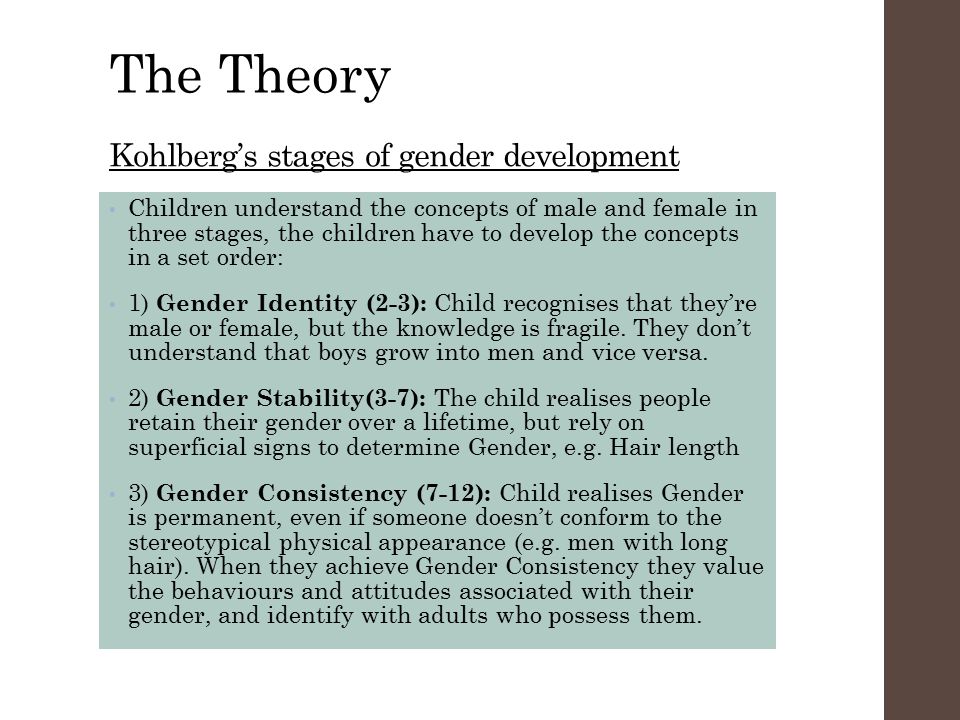 Today he is an outsider: the old goals have been achieved, there are no new ones. As a result, adherents of canonical feminist ideas had to direct their forces in a different direction - in the fight against sexual exploitation, office harassment, domestic violence, and so on. And this, sorry, is not the same scale. In summary, feminism is more dead than alive. However, his work was not lost. Like the Decembrists of Herzen, he awakened to life new movements that claim to be the ultimate truth when it comes to the relationship of the sexes in the world of the future.
Today he is an outsider: the old goals have been achieved, there are no new ones. As a result, adherents of canonical feminist ideas had to direct their forces in a different direction - in the fight against sexual exploitation, office harassment, domestic violence, and so on. And this, sorry, is not the same scale. In summary, feminism is more dead than alive. However, his work was not lost. Like the Decembrists of Herzen, he awakened to life new movements that claim to be the ultimate truth when it comes to the relationship of the sexes in the world of the future.
Let's move on to the specifics, as soon as we decide on the definitions.
Gender and sex glossary
Modern science divides two concepts:
1. Sex is a set of biological characteristics that distinguish a male from a female.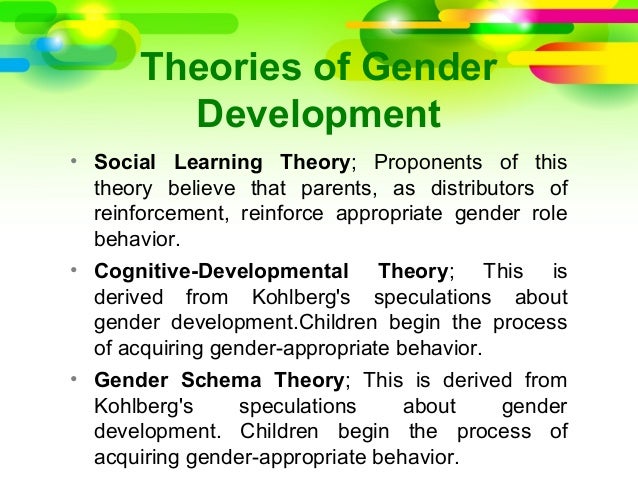 The tone here is set by a set of primary and secondary sexual characteristics, known to each of us from the school biology course.
The tone here is set by a set of primary and secondary sexual characteristics, known to each of us from the school biology course.
2. Gender is a typical set of traits and characteristics characteristic of men and women in a particular society. From this follows the concept of gender self-identification, which explains with which gender an individual directly or indirectly associates himself.
The variability of gender roles in the modern world tends to infinity. The top dating site Tinder is already offering users 37 gender identity options.
This, of course, is too much. In fact, the basic set of options in this area today comes down to three positions:
- cisgender: gender corresponds to sex;
- transgender: one gender - another gender;
- bigender: gender one - gender two.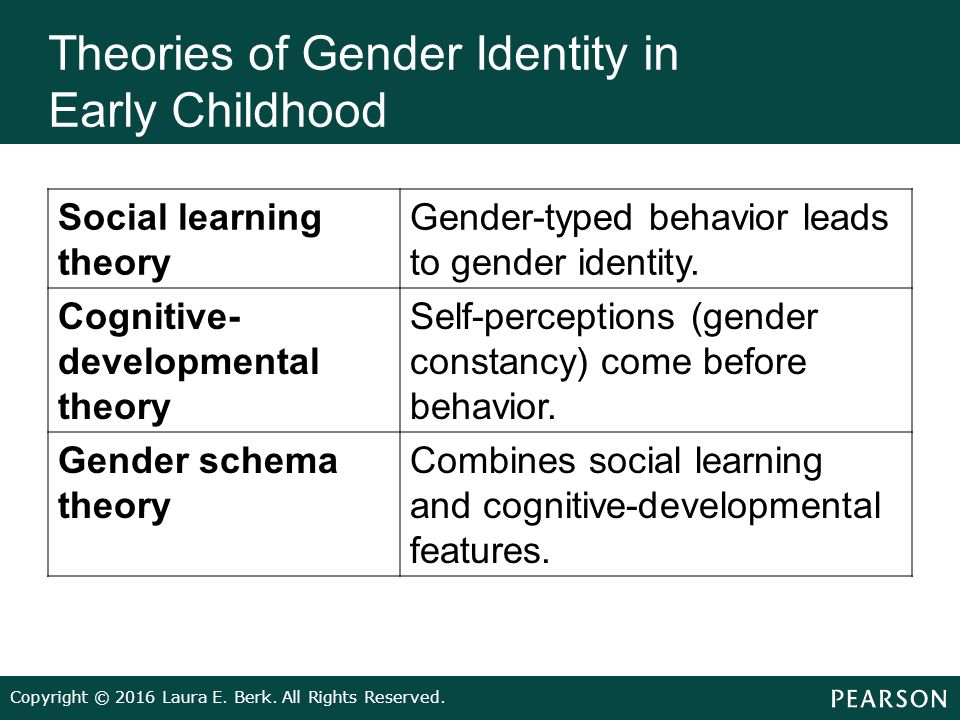
If everything is more or less clear with the first two models, then it is worth dwelling on the third one - it's worth it.
Two in one
It is in bigenderism that many masters of modern sociology see the bright future of humanity. However, before it comes, this gender identity will have to be reborn from an ugly duckling into a white-winged swan. The problem is that the status of a bigender in its traditional sense is based on the alternation of roles: today a boy, tomorrow a girl, the day after tomorrow again a boy, and so on. Agree, slightly smacks of schizophrenia. There is good news: according to sociologists, fundamental shifts in social patterns and subsequent changes in the self-awareness of the individual should lead to the fact that the bigender of tomorrow will become a man and a woman not alternately, but simultaneously.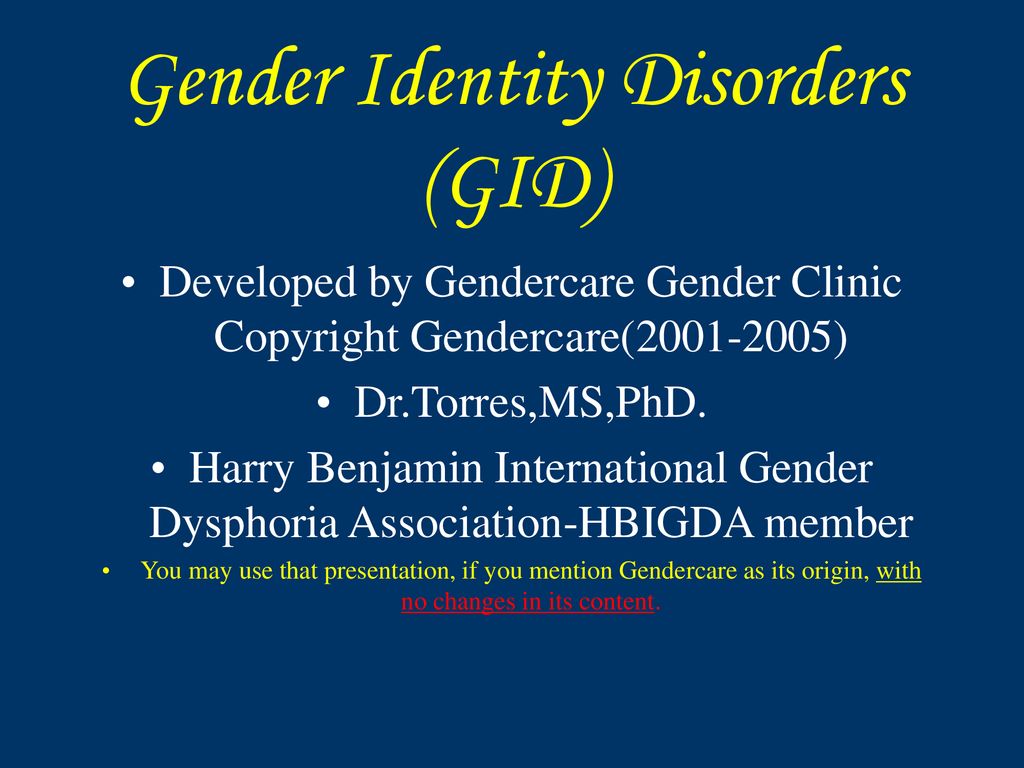 This is a completely different calico. A full-fledged M/W symbiosis will provide its bearer with a wide worldview and fullness of life sensations, which are fundamentally unattainable for a man or a woman separately.
This is a completely different calico. A full-fledged M/W symbiosis will provide its bearer with a wide worldview and fullness of life sensations, which are fundamentally unattainable for a man or a woman separately.
Such a two-in-one concept of a superman has very real chances of becoming a social singularity, on the basis of which social relations of the future will be built.
Affordable means
The next offspring of feminism is postgenderism, declaring in the foreseeable future a complete rejection of the concept of sex. For this, according to the adherents of the movement, a purposeful restructuring of public consciousness is necessary. Plus, the development of the biotech industry, designed to completely free a woman from the reproductive function: it is her that postgenderists consider the source of all evil.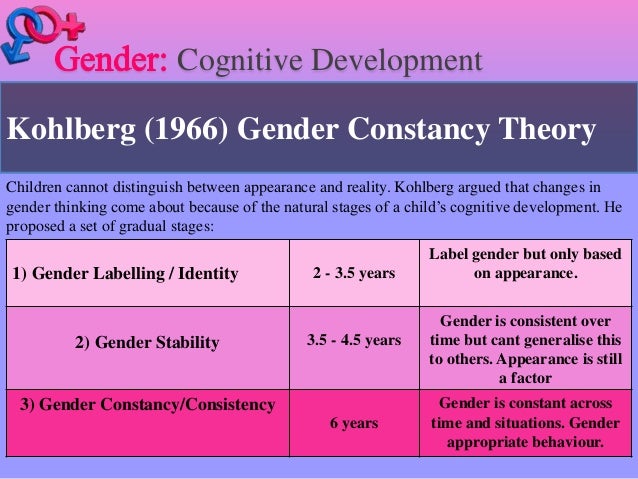 No less popular in neoliberal circles is cybertransgenderism. If we abstract from intimate details, he calls for the creation of technologies and devices that will allow the person of the future to arbitrarily and, most importantly, repeatedly change gender. The prerequisites are already evident today: summarizing global statistics, a research group at the University of Manitoba in November last year proposed to the world community to single out digital sexual orientation as a special type of sexual orientation - those who cannot imagine an act of intimacy without technology.
No less popular in neoliberal circles is cybertransgenderism. If we abstract from intimate details, he calls for the creation of technologies and devices that will allow the person of the future to arbitrarily and, most importantly, repeatedly change gender. The prerequisites are already evident today: summarizing global statistics, a research group at the University of Manitoba in November last year proposed to the world community to single out digital sexual orientation as a special type of sexual orientation - those who cannot imagine an act of intimacy without technology.
There are more than enough forecasts in this area. From the complete withdrawal of sexual relations into the virtual world, when all the necessary body movements are performed by 3D cues, and users, lounging in VR chairs, take off sensory cream. Up to high-tech solutions that will provide the possibility of a remote sexual act of human beings, which completely imitates real intimacy.
Adherents of the digisex approach are convinced that the upgrade of human relations in this area is inevitable, just as the transformation of a manual conveyor into an automated assembly line was once. The result will more accurately meet expectations, be achieved much faster and with less labor.
In addition to the systemic influence on the fate of civilization, gender-sex animation will have an extremely curious side effect. Today in public institutions there are two rooms with a generally accepted letter marking. Apparently, a third will soon have to be added. For visitors who do not associate themselves with either "M" or "F".
Question: Try to guess a new letter.
- Hollywood script. Will technology help overcome the demographic crisis
- Virtual corner.
 How artificial intelligence will educate our children
How artificial intelligence will educate our children - The Red Book. The institution of the family will disappear due to technology
The role of the family in shaping a teenager's gender identity
The family and parents play a decisive role in the formation of gender identity. It is the parents from childhood that begin to influence the formation of the child's gender identity, which consists in the unity of behavior and self-awareness, classifying oneself as a certain gender and focusing on the requirements of the corresponding gender role.
Gender behavior is understood as a special model of social behavior that reflects a system of ideas about one's sexual image, which is revealed in different situations, in activities, in the ways of relationships between girls and boys, determined by the standards of male and female behavior.
The main period of formation of gender identity belonging from the birth of a child to 7 years.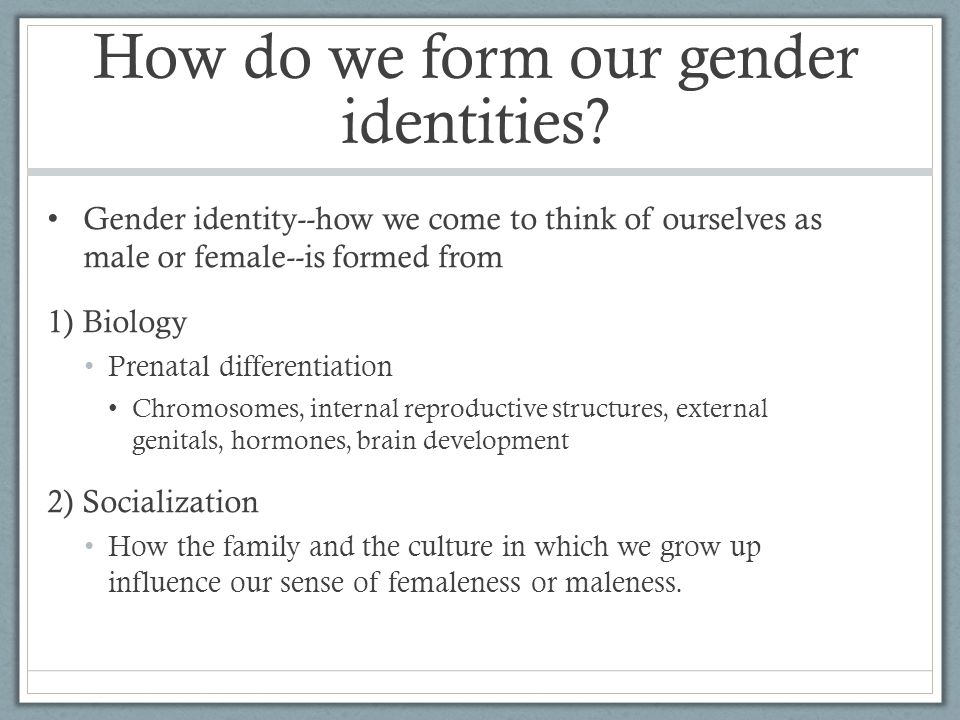 Primary gender identity is formed in 1.5-2 years. At 3 years old, children confidently refer to themselves as male or female. From 2 to 3 years, the child should learn and love his gender. After 4 years, a model of gender-role behavior is mastered, by the age of 5-6, children reach the peak of gender (awareness of the immutability and constancy of sex). From 4 to 7 years, the formation of the ability to implement gender-role identity in joint activities takes place.
Primary gender identity is formed in 1.5-2 years. At 3 years old, children confidently refer to themselves as male or female. From 2 to 3 years, the child should learn and love his gender. After 4 years, a model of gender-role behavior is mastered, by the age of 5-6, children reach the peak of gender (awareness of the immutability and constancy of sex). From 4 to 7 years, the formation of the ability to implement gender-role identity in joint activities takes place.
At primary school age, sexuality "sleeps", but the child's sexual role is being actively formed. In the course of gender socialization, the ideas formed in the culture about how a boy and a girl, a boy and a girl should behave, what personal qualities men and women should have are assimilated.
In adolescence, gender identity becomes a central component of self-awareness. A teenager perceives himself and his peers as representatives of a certain gender through signs and sign systems formed in the teenage subculture.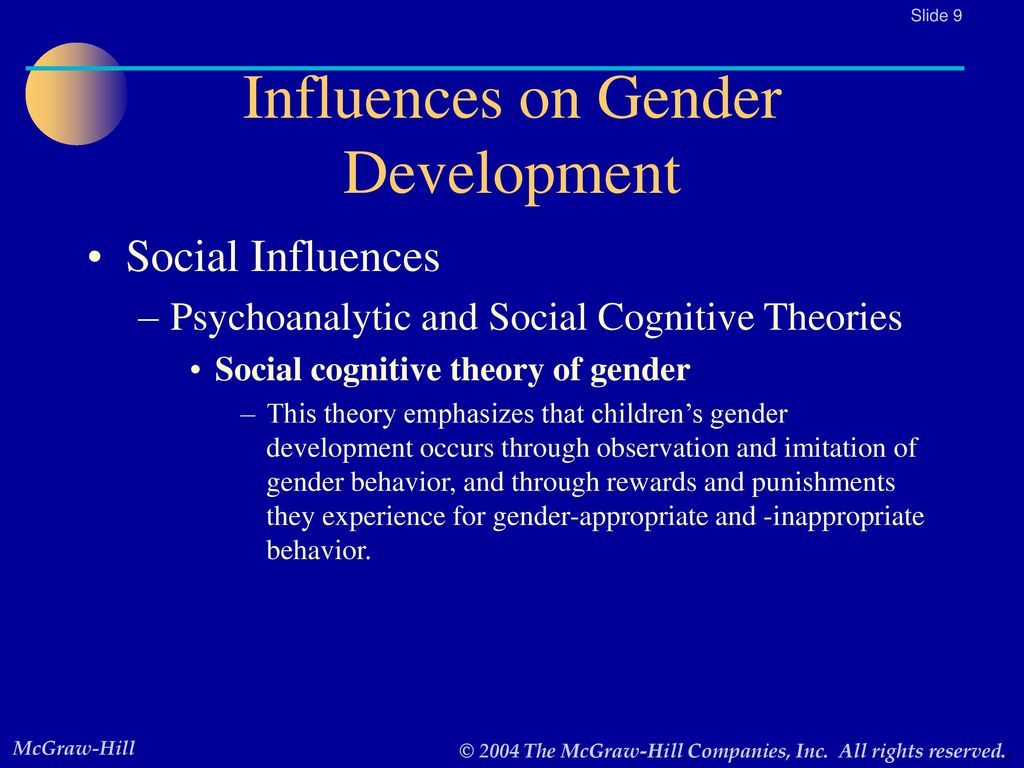 A teenager tends to use things that serve to increase his status as a representative of the sex among his peers, i.e. are symbolic.
A teenager tends to use things that serve to increase his status as a representative of the sex among his peers, i.e. are symbolic.
Boys and girls, building their own picture of the world around them, their own image of “I”, are not limited to passive acceptance of gender norms and roles, but strive to independently and actively realize, comprehend, form their gender identity.
It is very important that in this process the paternal and maternal influences are balanced. Thus, in the early stages of life, psychological contact with the mother is more important for children of both sexes; in adolescence, paternal upbringing comes to the fore, especially when it comes to teenage boys. Male adolescents should develop masculinity (the behavior of a man traditionally expected by society), and teenage girls should develop femininity (femininity).
The main standards of gender behavior are fathers. The role of a father who actively communicates with children and is an authority for them is irreplaceable.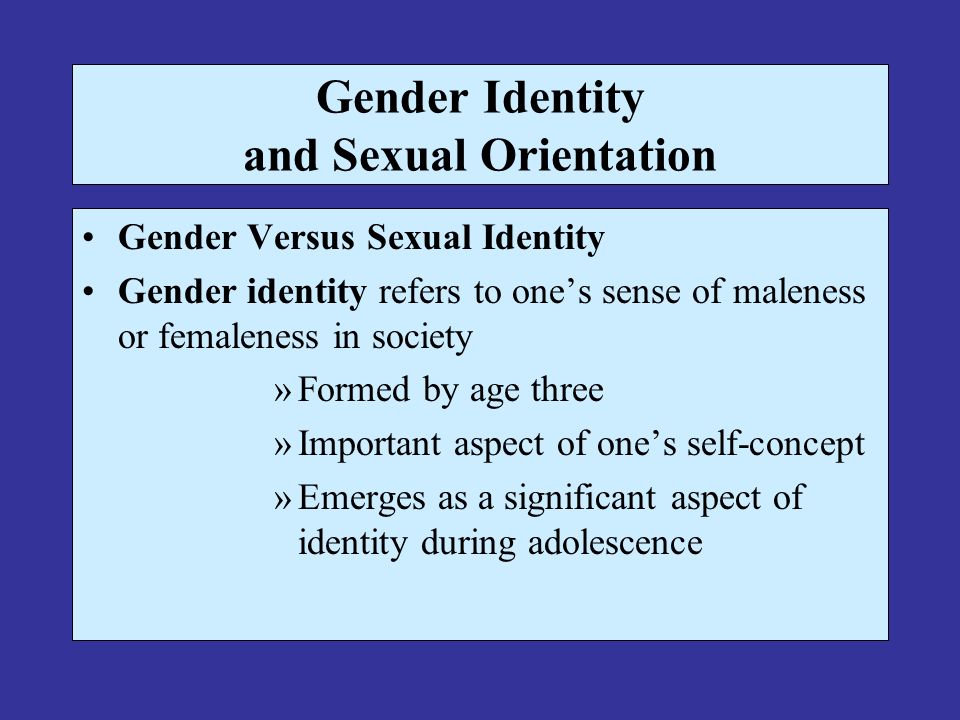 A father is a source of security for a teenager. The child is better socialized, being in close contact with such a father, the danger of accentuations (excessively pronounced character traits) and psychopathologies is eliminated.
A father is a source of security for a teenager. The child is better socialized, being in close contact with such a father, the danger of accentuations (excessively pronounced character traits) and psychopathologies is eliminated.
Thus, the father emerges as an authoritative social model, an example of behavior; his presence in the family gives the teenager confidence and independence in making decisions. Only a father can form in a child the ability to take initiative and resist group pressure, which is important when being in peer groups that are significant for adolescents.
The father also plays an important role in the development of a teenage girl. His features, features of his behavior, nuances of relationships with him are remembered, at times unconsciously, and become a model, a kind of pole (positive or negative), to which all types and forms of behavior of a future woman with men. A warm relationship with her father helps her daughter to be proud of her femininity.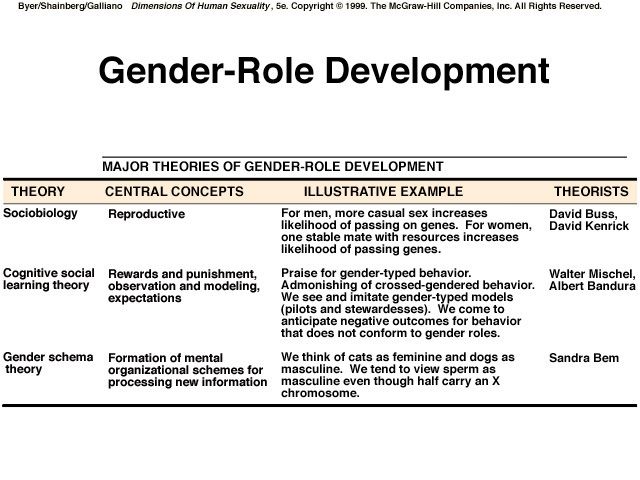
This model of relationships helps the teenager to accept himself as a woman and helps in heterosexual (typical of most people of sexual orientation) adaptation. The same applies to teenage boys. If a boy identifies with his father and maintains a warm relationship with his mother, then his future relationships with women are likely to be favorable. Boys' self-esteem depends on the degree of support from their parents.
The life and conditions of raising a child without a mother or father have clear specifics and differ significantly from the life of a child in a complete family. Even if a mother or father tries to fill the absence of a second parent, more often a father, and does everything possible to combine the roles of both parents, he or she, in principle, cannot simultaneously realize both parental positions - maternal and paternal. Such living conditions of a teenager will be reflected in the characteristics of his personal development: his emotional well-being, self-esteem, relations with others, and gender behavior.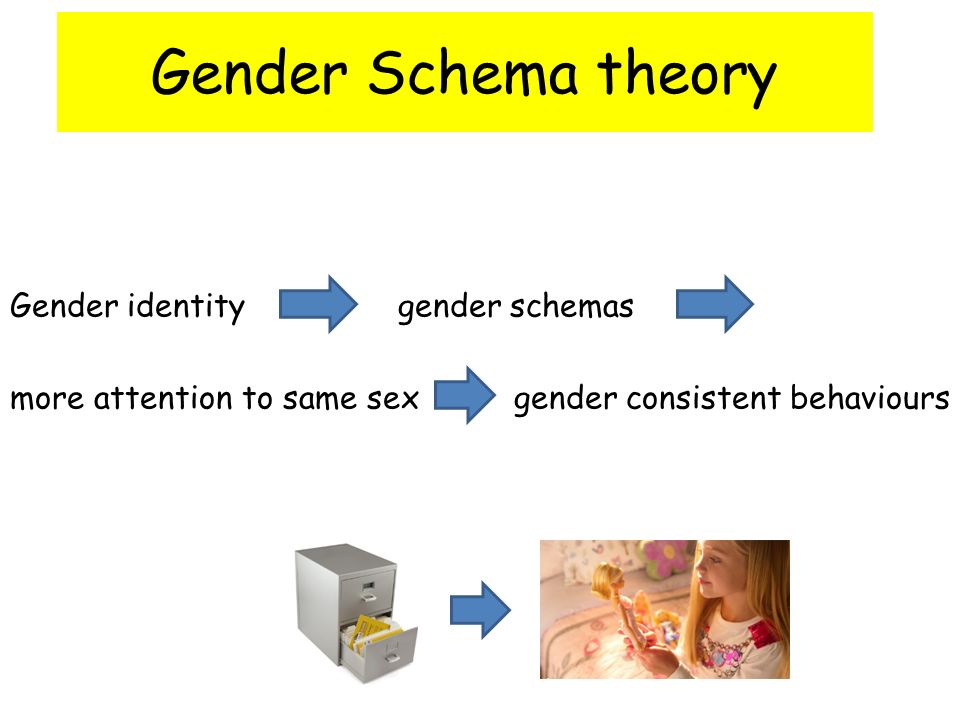
Teenage boys growing up in single-parent families face a serious problem. A child who grows up without a father is deprived of the necessary male example, which is especially significant for regulating the behavior of older boys, and as a model of a future partner for girls. A child growing up without a father also suffers from a lack of authority, a lack of order and discipline, which in a complete family are personified by a father.
Equally important is the lack of confidence in social inclusion, because the role of the father is usually the real and symbolic basis of the family's economic well-being. The role of the mother in giving the child the opportunity to feel the intimacy of human love, the task of the father is to pave the way for the child into human society.
Boys find themselves in an even more unfavorable situation if there is an insufficient role of the father in the family or a rearrangement of family roles occurs: the grandmother plays the role of the mother, and the mother plays the role of the father. For girls, leaving their father's family is the most traumatic impact at a younger preschool age, as it affects the loss of emotional contact with him. For boys, separation from the father is more severe at the older preschool age, since the possibility of identification with the role of a man disappears. Therefore, girls are more likely to develop emotional disorders, mainly of a hysterical circle, boys are characterized by a manifestation of self-doubt, as well as the emergence of fears due to excessive guardianship or anxiety on the part of relatives replacing their father, problems may arise in interpersonal communication with peers of the same sex. .
For girls, leaving their father's family is the most traumatic impact at a younger preschool age, as it affects the loss of emotional contact with him. For boys, separation from the father is more severe at the older preschool age, since the possibility of identification with the role of a man disappears. Therefore, girls are more likely to develop emotional disorders, mainly of a hysterical circle, boys are characterized by a manifestation of self-doubt, as well as the emergence of fears due to excessive guardianship or anxiety on the part of relatives replacing their father, problems may arise in interpersonal communication with peers of the same sex. .
The father is a model for identifying the male role for the son, for the daughter he serves as a model of complementarity (mutual complementarity), therefore, the departure of the father from the family causes some adaptive difficulties in adolescence, affecting their psychological and sexual development. The mother, on the other hand, seeks to surround the children with the maximum amount of influence, love and care, and thus compensate for the absence of the father.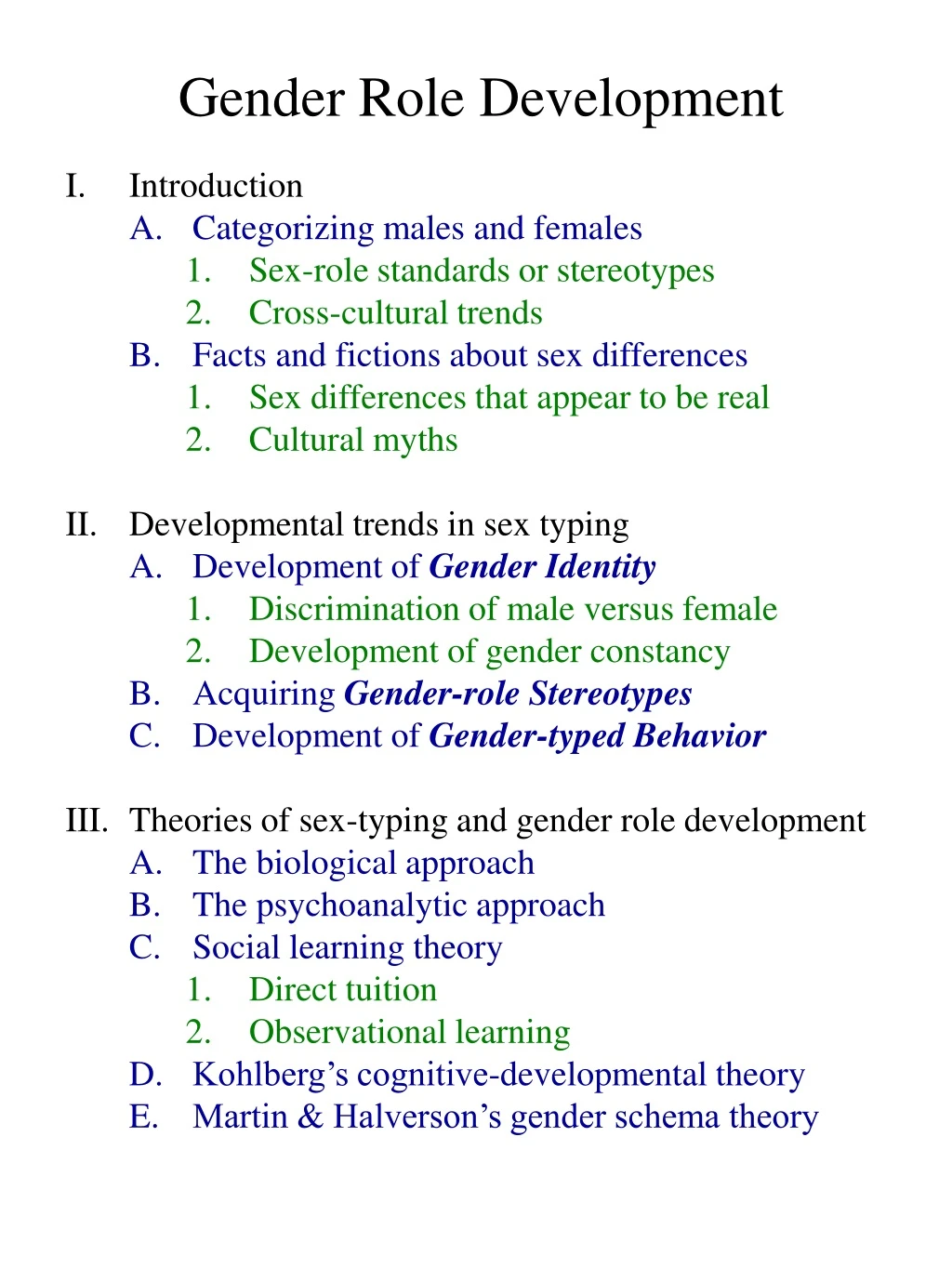 In relation to the children of such a mother, a guardian, protective, controlling, restraining the initiative of the child position is characteristic. Such a line of behavior forms an emotionally vulnerable, dependent, subject to external influences, "outside controlled" egoistic personality. Moreover, a child growing up in an incomplete family often becomes the object of moral and psychological pressure received from children growing up in prosperous complete families, which leads to a feeling of insecurity, and sometimes anger or aggressiveness.
In relation to the children of such a mother, a guardian, protective, controlling, restraining the initiative of the child position is characteristic. Such a line of behavior forms an emotionally vulnerable, dependent, subject to external influences, "outside controlled" egoistic personality. Moreover, a child growing up in an incomplete family often becomes the object of moral and psychological pressure received from children growing up in prosperous complete families, which leads to a feeling of insecurity, and sometimes anger or aggressiveness.
The composition of the family strongly influences the formation and development of the gender identity of adolescent children, and the incompleteness of the family leads to a collision with specific difficulties that affect the development and upbringing of the child, as well as the formation of his personality.
Dysfunctional parent-child relationships can also occur in a complete family. The factors provoking violations in the process of gender socialization of the boy include a symbiotic relationship with the mother, reduced authority of the father, authoritarianism of the mother, and emotionally impoverished relationship with the father.





